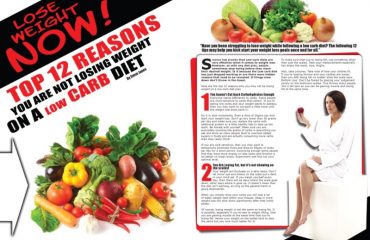Low GI – Fact Vs Fiction
Low GI – Fact Vs Fiction
Imagine a categorizing system in which numbers are assigned to foods, allowing you to choose the foods that curb appetite, help shed excess pounds, lower your risk for diabetes, and improve heart health. These in fact are the claims of popular diets that use the Glycemic Index— GI diet, for short.
What is the Glycemic Index?
The Glycemic Index ranks carbohydrate-containing foods (on a scale from 0 to 100) based on their effects on blood sugar levels in the body. Eating highly processed foods, such as bread made from refined white flour, raises blood sugar higher and faster than does eating whole foods, such as whole-wheat bread or an apple. Foods like white bread that cause the most rapid rise in blood sugar are given a higher number, while whole-wheat breads and apples have lower ratings. A rating of 55 or below is considered low, and 70 or above is considered high.
The Premise
Proponents of the GI diet believe that the lower the GI number of a carbohydrate food, the better. High GI foods are digested and metabolized more quickly, causing a rapid rise in blood glucose levels. This creates a dramatic spike in levels of the hormone insulin, which works to remove sugar from the blood. These responses can lead to an overproduction of insulin, contributing to weight gain. Therefore, carbohydrate foods with low Glycemic Indexes cause less insulin secretion and slow the clearing of glucose from the blood stream resulting in greater satiety, and fewer calories consumed throughout the day.
Using the Glycemic Index for meal planning is a very complicated process. Here are some of the limitations:
There is usually a wide variation in the GI measurement.
A potato can be as low as 56 or as high as 100. In fact, a food’s GI score can change based on the food’s
ripeness level. Only about 5% foods in the national food database have been tested.
GI testing is done on individual foods, but we consume most foods in combinations. Fiber, protein, and fat will usually reduce the Glycemic Index of a meal. The rate at which different people digest carbohydrates varies.
And each person’s glycemic response may vary throughout the day. A food’s GI score can also change based on preparation techniques. Grinding and cooking can elevate the GI score of some foods, because they become quicker and easier to digest.
Relying on the Glycemic Index can still lead to overeating and weight gain. Peanuts look like the perfect choice with a GI of 14, but with about 400calories in ½ cup, they won’t help shed pounds when eaten in excess.
More Research
The Glycemic Index is a useful tool for ranking carbohydrates. However, it is currently only in its infancy regarding health benefits. More research is necessary to make it a truly valid, reliable, and applicable teaching tool. Latest research has also shown that those following a low glycemic diet did not lose any additional weight over those who consumed a diet with high glycemic foods.
Marketing Hype
Food companies love all the little ticks and approval logos to help sell their sub standard food products to consumers. First it was the 99% fat free labeling, meaning no fat but we have replaced it with a ton of sugar – much worse! Then came the Heart Foundation tick and a host of foods that appeared to be heart friendly. Once again you can take all the fat out of food but if it’s loaded with sugar or eaten in abundance it is simply not good for you. The food producers eyes lit up when the “Low GI” fad came to town. It was all over products and for many consumers they thought it was a license to go crazy on that particular food as long as it had the Low GI logo stamped on it.
So it’s important to be aware that food companies are in the business of selling their product and they will use whatever tools they have to stack the odds in their favour. A tick, a logo that makes consumers feel comfortable with eating that particular food. Almost a guilt free logo that helps many justify their bad eating habits. As they always say, buyer beware. Make sure you do your own research and educate yourself so you don’t fall victim of savvy food marketers.
To read the full article “GI- Fact Vs Fiction” purchase Volume 6 Issue 6 of Natural Bodz magazine Click here




